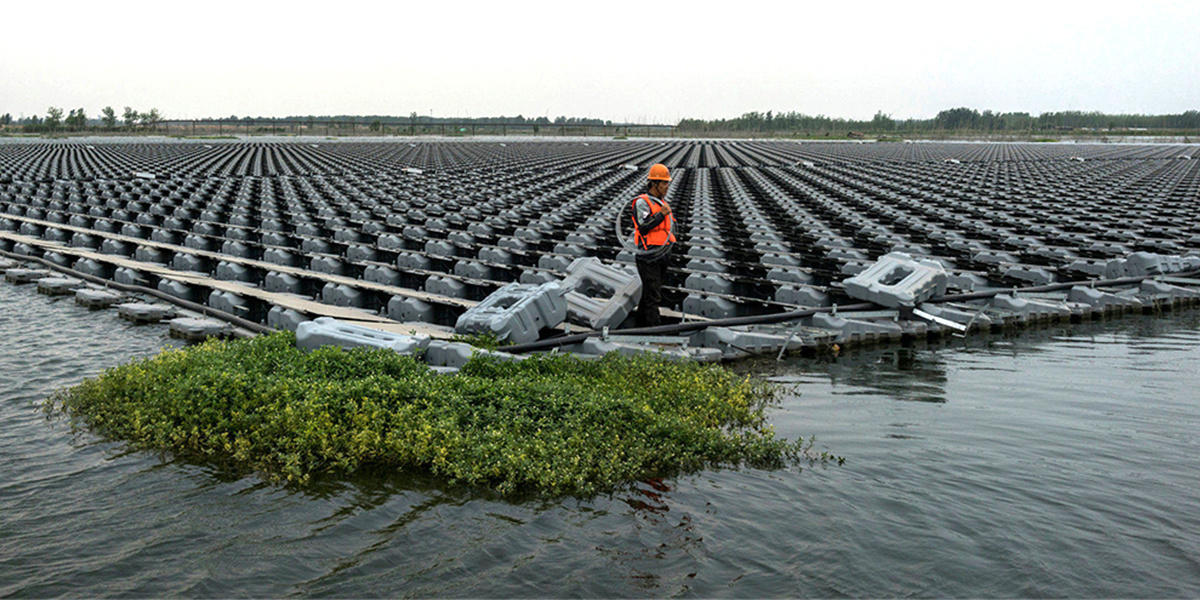
Solar Capacity Exceeded All Other Fuel Sources Combined in 2017, Study Finds

In 2017, the world invested more in solar power than it did in any other energy technology and installed more new solar capacity than all other energy sources combined, including fossil fuels.
Those are the bright findings of a UN-backed report Global Trends in Renewable Energy Investment 2018, published Thursday.
The report, a collaboration between the United Nations Environment Programme, Bloomberg New Energy Finance, and the Frankfurt School of Finance and Management, found that investors committed $279.8 billion to renewable energy overall, excluding large dams, and $160.8 billion to solar specifically.
“The extraordinary surge in solar investment shows how the global energy map is changing and, more importantly, what the economic benefits are of such a shift,” UNEP head Erik Solheim said in a UN press release about the report.
Solheim added that those benefits included the creation of more better paying, higher quality jobs.
China was the decided leader in solar and renewable investment. It was responsible for more than half of the 98 gigawatts of solar capacity added last year and 45 percent of the dollars invested in renewables over all.
The U.S. followed China as No. 2 in the top 10 list of renewable-investing countries, but it lagged far behind. It invested $40.5 billion in renewable energy, down six percent from 2016. China, on the other hand, upped its investments by 30 percent to $126.1 billion.
Overall, 2017 continued a trend begun in 2015 of developing countries investing more in renewable energy than developed countries. Developing countries increased their investments by 20 percent to $177 billion, accounting for 63 percent of total investments, while developed countries decreased their investments by 19 percent to $103 billion.
Renewable energy investment in the UK, Germany and Japan all took major hits, falling by 65 percent, 35 percent and 28 percent, respectively. The countries still ranked seventh, fifth and third for overall investments.
Mexico, Australia and Sweden, meanwhile, increased their commitments by substantial amounts: 810 percent, 147 percent and 127 percent, in order. They were ranked ninth, tenth and sixth overall.
Rounding out the top 10 list were India at No. 4 and Brazil at No. 8. Together with China, the three emerging economies accounted for just over half of global renewable investments.
While they didn’t make it onto the top ten, Egypt and the United Arab Emirates made impressive strides, increasing their renewable investments by six times and 29 times, respectively.
As solar investments rose, costs fell. The cost per megawatt-hour for a solar installation dropped by 15 percent to $86.
However, while the reported investments bode good things for the future, the report found that present energy use shows we still have a ways to go. The proportion of energy generated by renewable sources in 2017 was 12.1 percent, up from 11 percent the year before.
“Climate change is moving faster than we are,” Solheim, UN Framework Convention on Climate Change Executive Secretary Patricia Espinosa, and Frankfurt School President Nils Stieglitz wrote in the report’s foreword. “Last year was the second hottest on record and carbon dioxide levels continue to rise. In electricity generation, new renewables still have a long way to go. While renewable generating costs have declined, and governments are phasing-out fossil fuel subsidies– they amounted to a total US$260 billion in 2016—the transition needs to accelerate and be complemented by strong private finance that can make sure this global momentum continues,” they wrote.
World's Largest Solar Farm Leapfrogs India to Third in Utility-Scale Solar https://t.co/25pE8C8quL @Solar_Builder @RealSolar
— EcoWatch (@EcoWatch) December 3, 2016

 233k
233k  41k
41k  Subscribe
Subscribe 